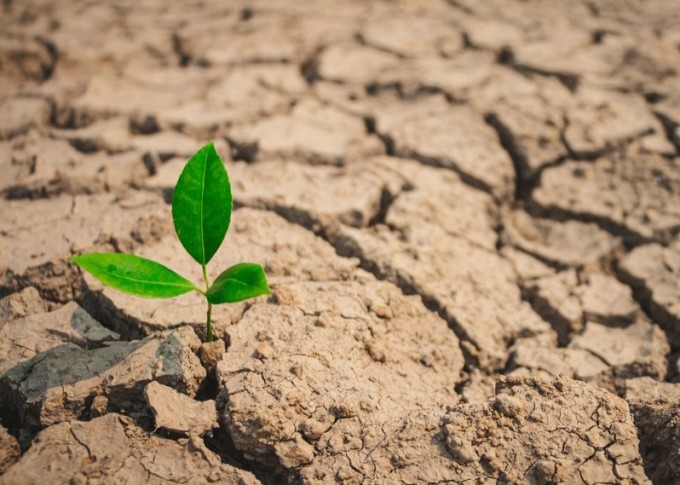
The summer of 2025 will be hot and with little rain. According to Kirill Pavlov, a certified climate change expert, the US Ocean Service confirms a 60% decrease in temperature above the Pacific Ocean. For Kazakhstan, this primarily means a decrease in precipitation. Meanwhile, Kazhydromet reports that 2023 has become the hottest year in recorded history. The average annual air temperature in Kazakhstan has reached record levels, taking first place for the entire observation period since 1941, which confirms global warming trends, the APK News agency reports.
The La Niña effect for Kazakhstan and Central Asia means, first of all, a decrease in precipitation, according to K. Pavlov. Afghanistan will take more water from the Amu Darya, Uzbekistan - from the Syr Darya, Kazakhstan will get less water.
“Winter is predicted to be frosty and with little snow. Summer will be hot and with little rain,” Pavlov believes.
Earlier, the head of the Union of Field Growers also predicted a drought in 2025. Speaking about the large harvest of 2024, he noted that 2011 was repeated.
“I think that 2012 will be repeated. I am now convinced that 2025 will be a dry year. Accordingly, we will work exactly the same way as in 2011-2012. In 2011, we accumulated, in 2012-2013 we transported. I think that sales will be weak now. Everything will go to next year,” Viktor Aslanov reported.
The latest annual report of Kazhydromet states that 2023 has been officially recognized as the warmest year in the entire history of observations. The average global temperature was 1.45 degrees above the pre-industrial level (1850-1900). This fact confirms the ongoing trends of global warming.
The average annual air temperature in Kazakhstan also reached record levels, taking 1st place for the entire observation period since 1941. The anomaly was +2.58 degrees relative to the climatic norm (1961-1990). Extremely high temperatures were recorded in almost all regions of Kazakhstan, especially in spring, summer and autumn. In a number of regions, the temperature exceeded +40 degrees, and heat waves lasted over 30, and in some places more than 60 days. The maximum temperature of +46 degrees was recorded at a station in the West Kazakhstan region.
However, in 2023, records for daily minimum temperatures were also set at four weather stations in the western and southern regions of Kazakhstan. Thus, in the west, a temperature of -42.7 degrees was recorded, in the south - -36.4 degrees.
"Climate changes in Kazakhstan, due to its geographical location and large territory, manifest themselves unevenly across regions and seasons. These changes can have both negative and positive effects on the biophysical systems, economic activity and social sphere of the republic. For example, a longer growing season in the northern regions can have a beneficial effect on agriculture, while an increase in the duration of heat waves in the southern and western regions creates increased risks to public health and increases the load on the energy system," the Kazhydromet report says.
In general, for the globe, 2023 was the warmest year in the period of instrumental observations.
The year was record-breaking warm in almost all regions of Kazakhstan, except for Zhambyl, Pavlodar and North Kazakhstan regions. In many regions of Kazakhstan, the warmest months were March and November.
A steady increase in the average annual air temperature is observed in all regions of Kazakhstan. In all seasons except winter, the increase in temperature is statistically significant.
"The observed increase in the frequency and duration of periods with high air temperatures in the warm period of the year leads to negative consequences not only for the human and animal organisms, but also for the transport infrastructure due to the deformation of the road surface, for the conditions of the urban environment and recreational areas, for the energy industry, since there is a need for additional energy production for cooling premises. An increase in surface temperature leads to a reduction in the period with negative temperatures, as a result, precipitation more often falls in liquid form. This in turn can affect snow accumulation in the cold period of the year. In mountainous areas, both the area and the period of precipitation in solid form are reduced, which affects glacial systems. An increase in surface temperature in the cold period of the year leads to a decrease in the need for thermal energy production. A reduction in the number of days with frost, on the one hand, leads to a positive effect on public health, on the other hand, heat waves in the cold period of the year can lead to the formation of ice on the roads when the cold weather returns. "The increase in the duration of the vegetation period in those areas where it is combined with an increase in the amount of precipitation and a reduction in the maximum duration of the rainless period (in some northern and south-eastern regions) improves the conditions for crop production. In some areas, an increase in the maximum daily amount of precipitation has been recorded, which may lead to an increased risk of destruction of the road surface and storm systems in populated areas, landslides and mudflows in mountainous areas," the document says.